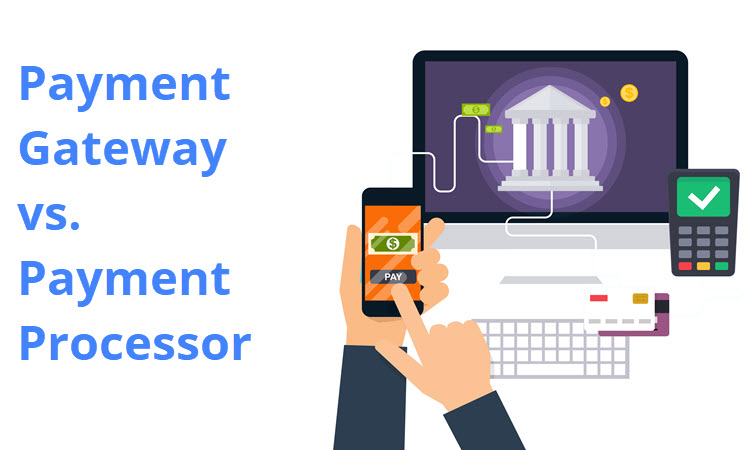
It is important to compare payment gateways and payment processors to understand their key differences and choose a solid option for your business needs.
What is a Payment Processor?
A payment processor is responsible for processing customer transactions. It transmits the customer’s card payment information to the issuing and acquiring banks. It also helps eliminate the risk of fraudulent transactions by following strict security measures.
In an offline transaction, a payment processor provides businesses with a point-of-sale interface such as card dispensers and other devices.
What is a payment gateway?
While payment processors process information, a payment gateway is responsible for passing payment data to the processor.
It helps connect the payment processor to merchant accounts and card companies, essentially turning it into an online POS terminal for e-commerce sites.
The payment gateway authenticates a customer’s digital payment details and then passes the payment details to the payment processor.
While a payment processor facilitates transactions between two parties, a payment gateway is responsible for capturing the customer’s payment details and returning them to the payment processor.
What is a payment aggregator?
A payment aggregator, also known as an acquirer, allows merchants to accept payments through different digital modes without setting up separate integrations. If you are an offline business owner and all your payments are made with a personal card, you do not need a payment gateway to process payments.
Let’s say you own an online business and want to enable online transactions for customers. In this case, you need both a payment processor and a payment gateway to enable online payments.
Let’s see how a payment cycle works when only one payment processor is used instead of using both the payment processor and the payment gateway.
Use of a payment processor for transactions:
1. The payment processor provides the merchant with a payment terminal.
2. The terminal authenticates the customer’s card data and sends the payment information to the issuing bank for payment approval.
3. Once the issuing bank approves or rejects the payment, it sends this information to the payment processor, which is then transmitted to the payment terminal.
4. If the issuing bank has approved the transaction, the payment details will be shared with the acquiring bank.
5. The transaction is now complete.
Using a payment processor and payment gateway for transactions:
1. After customers select a product or service, they are directed to the checkout to submit payment information.
2. The payment gateway authenticates the customer’s account by matching the account number data with the issuer’s card data.
3. While the payment processor is responsible for transmitting payment information to the card network and vice versa, it also confirms the validity of the card and verifies compatibility with the secure 3D platform.
4. A payer authentication request is sent to the access control server where the CVV is verified.
5. The access control server generates an authentication value of the account holder, which is then transmitted by the merchant to the acquirer.
6. The merchant sends a request to the payment aggregator and the payment aggregator forwards the request to the issuing bank.
7. If the client’s account has sufficient funds, the requested amount will be debited and transferred to the merchant’s account.
How to choose a suitable payment gateway for your business?
Just as it is important to choose a reliable payment processor, it is just as important to choose a payment gateway. Here are some things to check to make an informed decision.
a. Payment Method: Your payment gateway system must be able to process multiple payment methods, such as digital wallets, UPI and prepaid cards, etc., with the exception of credit and debit cards.
b. Reliable and Fast Support: Choose a payment gateway that offers you dedicated support to ensure a smooth onboarding experience and a short learning curve.
c. Personalized Checkout Experience: Customers love a personalized view, and a personalized checkout experience also gives your business greater brand recall; So go for a payment gateway integration that gives you the option to add your brand logo, colors, and font on the checkout page.
This article is shared by www.itechscripts.com | A leading resource of inspired clone scripts. It offers hundreds of popular scripts that are used by thousands of small and medium enterprises.